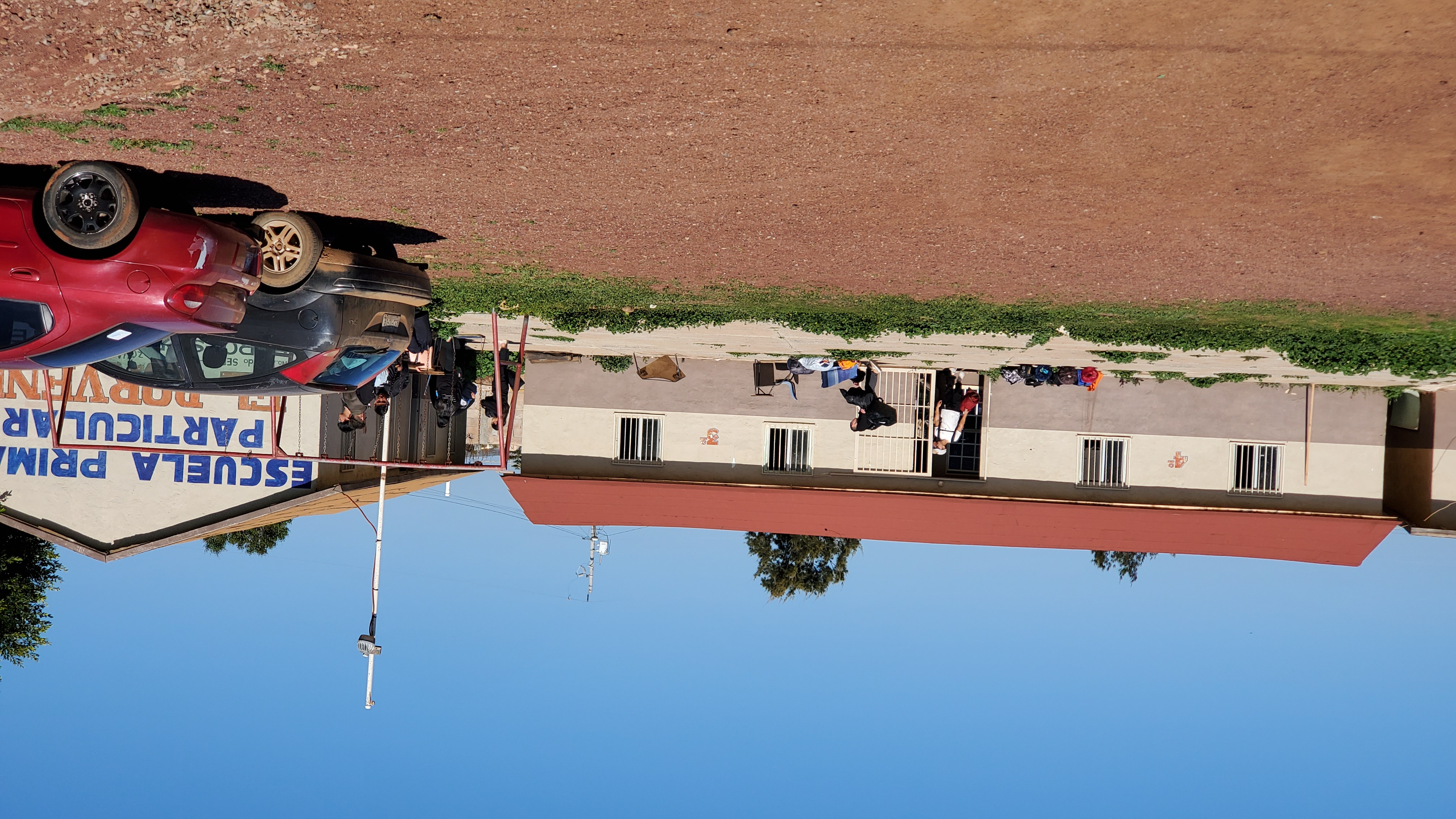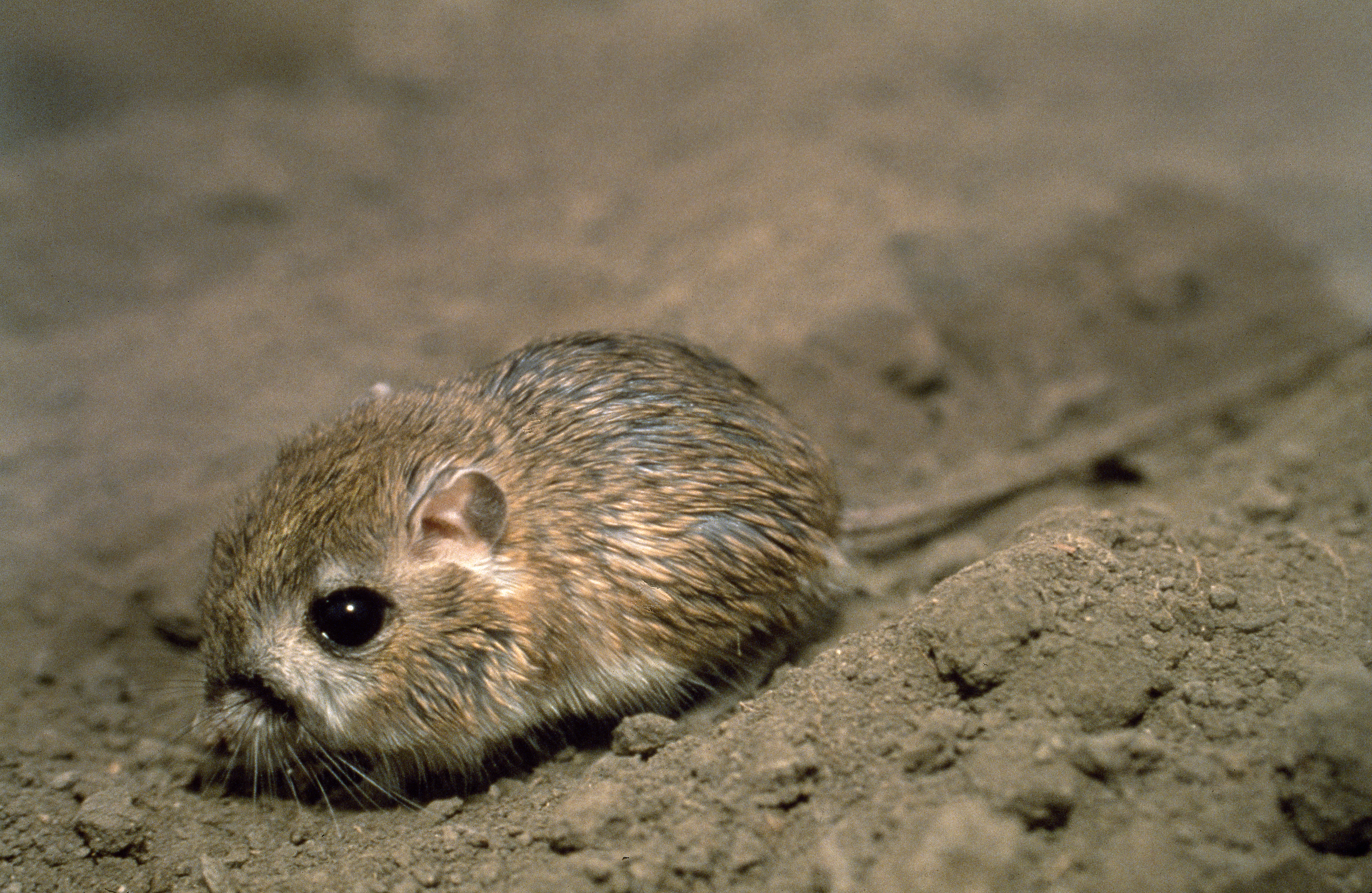|
San Quintin Kangaroo Rat
The San Quintin kangaroo rat (''Dipodomys gravipes'') is a species of rodent in the family Heteromyidae. It is endemic to Mexico, where it is known only from western Baja California. Its natural habitat includes arid lowlands with sparse vegetation. The first description of this species was made in 1925 by Laurence M. Huey (1892–1963), an American zoologist. At that time, two large colonies of this kangaroo rat were known, but since then, the area they occupied has been converted to farmland. Until 2017, no specimens had been found since 1986 and the IUCN listed the species as " critically endangered" and possibly extinct. However, in 2017, the species was rediscovered in the Valle Tranquilo Nature Preserve by researchers from the San Diego Natural History Museum; these findings were detailed in a report published in 2018. Description The San Quintin kangaroo rat is a small species of kangaroo rat with a head-and-body length of about and a weight of . The hairy tail has a la ... [...More Info...] [...Related Items...] OR: [Wikipedia] [Google] [Baidu] |
Laurence M
Laurence is an English and French given name (usually female in French and usually male in English). The English masculine name is a variant of Lawrence and it originates from a French form of the Latin ''Laurentius'', a name meaning "man from Laurentum". The French feminine name Laurence is a form of the masculine '' Laurent'', which is derived from the Latin name. Given name * Laurence Broze (born 1960), Belgian applied mathematician, statistician, and economist * Laurence des Cars, French curator and art historian * Laurence Neil Creme, known professionally as Lol Creme, British musician * Laurence Ekperigin (born 1988), British-American basketball player in the Israeli National League * Laurence Equilbey, French conductor * Laurence Fishburne, American actor * Laurence Fournier Beaudry, Canadian ice dancer * Laurence Fox, British actor *Laurence Gayte (born 1965), French politician * Laurence S. Geller, British-born, US-based real estate investor. * Laurence Ginnell, Iris ... [...More Info...] [...Related Items...] OR: [Wikipedia] [Google] [Baidu] |
San Telmo, Baja California
San Telmo is a town in Ensenada Municipality, Baja California, located on the Pacific Coast of Mexico. It is also a part of a region in Baja California called Héroes de Chapultepec. History Labor Protest of 2015 On March 17, 2015, a strike rose in the state of Ensenada. Approximately 300,000 people work in the coastal region of San Quintín and San Telmo —one of Mexico's leading export regions for crops such as strawberries, tomatoes, and cucumbers. During the protest, field laborers demanded a higher salary and government benefits such as social security and insurance. Before the protest, workers earned around 110 pesos per day with 10 hours of labor. Protestors raised up their current issues during the meeting with the representatives but granted negotiations with the Consejo Agricola de Baja California soon ended when Alberto Munoz, the representative of agribusinesses, did not return to the meeting. As a response, Fidel Sanchez, a spokesman for the Alliance of national ( ... [...More Info...] [...Related Items...] OR: [Wikipedia] [Google] [Baidu] |
Mammals Described In 1925
Mammals () are a group of vertebrate animals constituting the class Mammalia (), characterized by the presence of mammary glands which in females produce milk for feeding (nursing) their young, a neocortex (a region of the brain), fur or hair, and three middle ear bones. These characteristics distinguish them from reptiles (including birds) from which they diverged in the Carboniferous, over 300 million years ago. Around 6,400 extant species of mammals have been described divided into 29 orders. The largest orders, in terms of number of species, are the rodents, bats, and Eulipotyphla (hedgehogs, moles, shrews, and others). The next three are the Primates (including humans, apes, monkeys, and others), the Artiodactyla (cetaceans and even-toed ungulates), and the Carnivora (cats, dogs, seals, and others). In terms of cladistics, which reflects evolutionary history, mammals are the only living members of the Synapsida (synapsids); this clade, together with Sauropsida ... [...More Info...] [...Related Items...] OR: [Wikipedia] [Google] [Baidu] |
Rodents Of North America
Rodents (from Latin , 'to gnaw') are mammals of the order Rodentia (), which are characterized by a single pair of continuously growing incisors in each of the upper and lower jaws. About 40% of all mammal species are rodents. They are native to all major land masses except for New Zealand, Antarctica, and several oceanic islands, though they have subsequently been introduced to most of these land masses by human activity. Rodents are extremely diverse in their ecology and lifestyles and can be found in almost every terrestrial habitat, including human-made environments. Species can be arboreal, fossorial (burrowing), saltatorial/richochetal (leaping on their hind legs), or semiaquatic. However, all rodents share several morphological features, including having only a single upper and lower pair of ever-growing incisors. Well-known rodents include mice, rats, squirrels, prairie dogs, porcupines, beavers, guinea pigs, and hamsters. Rabbits, hares, and pikas, whose ... [...More Info...] [...Related Items...] OR: [Wikipedia] [Google] [Baidu] |
Natural History Of Baja California
Nature, in the broadest sense, is the physical world or universe. "Nature" can refer to the phenomena of the physical world, and also to life in general. The study of nature is a large, if not the only, part of science. Although humans are part of nature, human activity is often understood as a separate category from other natural phenomena. The word ''nature'' is borrowed from the Old French ''nature'' and is derived from the Latin word ''natura'', or "essential qualities, innate disposition", and in ancient times, literally meant "birth". In ancient philosophy, ''natura'' is mostly used as the Latin translation of the Greek word ''physis'' (φύσις), which originally related to the intrinsic characteristics of plants, animals, and other features of the world to develop of their own accord. The concept of nature as a whole, the physical universe, is one of several expansions of the original notion; it began with certain core applications of the word φύσις by pre-Soc ... [...More Info...] [...Related Items...] OR: [Wikipedia] [Google] [Baidu] |
Endemic Fauna Of The Baja California Peninsula
Endemism is the state of a species being found in a single defined geographic location, such as an island, state, nation, country or other defined zone; organisms that are indigenous to a place are not endemic to it if they are also found elsewhere. For example, the Cape sugarbird is found exclusively in southwestern South Africa and is therefore said to be ''endemic'' to that particular part of the world. An endemic species can be also be referred to as an ''endemism'' or in scientific literature as an ''endemite''. For example '' Cytisus aeolicus'' is an endemite of the Italian flora. '' Adzharia renschi'' was once believed to be an endemite of the Caucasus, but it was later discovered to be a non-indigenous species from South America belonging to a different genus. The extreme opposite of an endemic species is one with a cosmopolitan distribution, having a global or widespread range. A rare alternative term for a species that is endemic is "precinctive", which applies to s ... [...More Info...] [...Related Items...] OR: [Wikipedia] [Google] [Baidu] |
Endemic Mammals Of Mexico
Endemism is the state of a species being found in a single defined geographic location, such as an island, state, nation, country or other defined zone; organisms that are indigenous to a place are not endemic to it if they are also found elsewhere. For example, the Cape sugarbird is found exclusively in southwestern South Africa and is therefore said to be ''endemic'' to that particular part of the world. An endemic species can be also be referred to as an ''endemism'' or in scientific literature as an ''endemite''. For example '' Cytisus aeolicus'' is an endemite of the Italian flora. '' Adzharia renschi'' was once believed to be an endemite of the Caucasus, but it was later discovered to be a non-indigenous species from South America belonging to a different genus. The extreme opposite of an endemic species is one with a cosmopolitan distribution, having a global or widespread range. A rare alternative term for a species that is endemic is "precinctive", which applies to s ... [...More Info...] [...Related Items...] OR: [Wikipedia] [Google] [Baidu] |
Dipodomys
Kangaroo rats, small mostly nocturnal rodents of genus ''Dipodomys'', are native to arid areas of western North America. The common name derives from their bipedal form. They hop in a manner similar to the much larger kangaroo, but developed this mode of locomotion independently, like several other clades of rodents (e.g. dipodids and hopping mice). Description Kangaroo rats are four or five-toed heteromyid rodents with big hind legs, small front legs, and relatively large heads. Adults typically weigh between Nader, I.A. 1978"Kangaroo rats: Intraspecific Variation in ''Dipodomus spectabilis'' Merriami and ''Dipodomys deserti'' Stephens" ''Illinois biological monographs''; 49: 1-116. Chicago, University of Illinois Press. The tails of kangaroo rats are longer than both their bodies and their heads. Another notable feature of kangaroo rats is their fur-lined cheek pouches, which are used for storing food. The coloration of kangaroo rats varies from cinnamon buff to dark gray, dep ... [...More Info...] [...Related Items...] OR: [Wikipedia] [Google] [Baidu] |
El Rosario, Baja California
El Rosario is a town in San Quintín Municipality, Baja California, located on the Pacific Coast of Mexico. The census of 2010 reported a population of 1,704 inhabitants. Geography El Rosario is a small town on the west coast of the state of Baja California on Highway 1, 61 km south of San Quintín and 119 km north of Cataviña. Economy The town historically has been primarily fishing and agricultural, with the major crop being onions. Other local crops include chilies, alfalfa, potatoes, and beans. There are several nearby fishing camps at Punta Baja and Isla San Jerónimo. Bocana Beach (Spanish: ''La Bocana'') is located approximately 5 miles west of El Rosario through the Arroyo and over the dunes. Tourism The town is located on Mexican Federal Highway 1 and also a stop on the Baja 1000 racing event. There are several markets in El Rosario, ranging from mini-markets and meat markets to traditional markets and liquor stores. The town is one of many locations in Baja C ... [...More Info...] [...Related Items...] OR: [Wikipedia] [Google] [Baidu] |
San Diego Natural History Museum
The San Diego Natural History Museum is a museum located in Balboa Park in San Diego, California. It was founded in 1874 as the San Diego Society of Natural History. It is the second oldest scientific institution west of the Mississippi and the oldest in Southern California. The present location of the museum was dedicated on January 14, 1933. A major addition to the museum was dedicated in April 2001, doubling exhibit space. History The San Diego Natural History Museum grew out of the San Diego Society of Natural History, which was founded on October 9, 1874. The Natural History Society was founded by George W. Barnes, Daniel Cleveland, Charles Coleman, E. W. Hendrick and O. N. Sanford. It is the oldest scientific institution in southern California, and the second oldest west of the Mississippi. In its initial years, the San Diego Society of Natural History was the region's primary source of scientific culture, serving a small but growing community eager for information a ... [...More Info...] [...Related Items...] OR: [Wikipedia] [Google] [Baidu] |


.jpg)
.jpg)

.jpg)